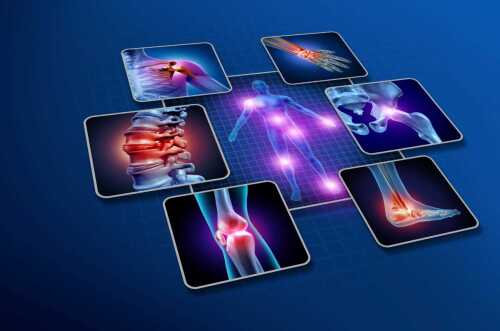We talk about inflammation a lot. But what is it? What’s happening in your body when you have inflammation?
Acute and chronic inflammation
There are two types of inflammation – acute and chronic.
Acute inflammation
Acute inflammation is your body’s reaction to things such as an infection (e.g. a cold or infected wound) or an injury (e.g. a sprained ankle or bee sting).
Symptoms associated with acute inflammation are:
- pain
- redness
- swelling
- heat
- loss of function (e.g. difficulty moving a swollen ankle after spraining it or difficulty breathing through your nose when you have a cold).
What’s happening in your body with acute inflammation?
When you sprain your ankle, or get an infection, your immune system automatically springs into action.
Cells close to the source of the injury or infection release chemicals known as inflammatory mediators (e.g. histamine). They increase blood flow to the area, widening blood vessels and allowing more blood to reach the injured tissue. As a result, the area becomes red and feels hot.
The extra blood to the area enables more immune cells to reach the injured tissue. This includes white blood cells, or leukocytes, whose role it is to defend your body against infections and disease and start the healing process.
Depending on the cause, acute inflammation can occur quickly and generally goes away quickly.
Chronic inflammation
Chronic inflammation is persistent, low-level inflammation that lasts for months or years. With chronic inflammation, the inflammatory process often begins when there’s no injury or illness present; and it doesn’t end when it should. When this happens, white blood cells may target and damage nearby healthy tissues and organs.
We don’t really know why chronic inflammation occurs. It doesn’t seem to serve a protective purpose as acute inflammation does.
However researchers have identified factors that increase your risk of developing chronic inflammation, including:
- chronic infections
- physical inactivity
- poor diet
- obesity
- imbalance of gut bacteria
- disturbed sleep
- smoking
- stress
- ageing.
Many people don’t know they have chronic inflammation, but they may feel symptoms such as:
- body and joint pain
- fatigue and insomnia
- weight gain or loss
- frequent infections
- depression, anxiety and mood disorders
- digestive problems (e.g. constipation, diarrhoea, acid reflux)
- skin rashes.
Chronic inflammation is associated with many diseases, such as rheumatoid arthritis, lupus, heart disease, diabetes, cancer, and bowel diseases like Crohn’s disease and ulcerative colitis.
If you’re concerned about chronic inflammation and have symptoms like those above that have been troubling you for some time, see your doctor . They’ll talk with you about your symptoms, do a physical exam, and may decide that blood tests are necessary to look for signs of inflammation.
The blood test will look for elevated C-reactive protein (CRP), which rises in response to inflammation.
Inflammation is helpful until it’s not
It’s important to remember that inflammation isn’t inherently bad. Acute inflammation serves a vital role in our health and survival. It helps us recover from injury and infection. However, when it’s chronic, it can negatively affect our health.
Always talk with your doctor if you have symptoms that are distressing you or making you feel unwell.
Contact our free national Help Line
Call our nurses if you have questions about managing your pain, musculoskeletal condition, treatment options, mental health issues, COVID-19, telehealth, or accessing services. They’re available weekdays between 9am-5pm on 1800 263 265; email (helpline@msk.org.au) or via Messenger.
More to explore
- Clear evidence for a link between pro-inflammatory diets and 27 chronic diseases. Here’s how you can eat better
The Conversation - Everything you need to know about inflammation
Medical News Today - Inflammation
Cleveland Clinic - Understanding acute and chronic inflammation
Harvard Health - What is inflammation? Types, causes, symptoms, diagnosis, and treatment
VeryWell Health
This article was first written and published by Lisa Bywaters in April, 2022.










